Blog 04/07/2021 - The Iraqi "Thunder Runs"
MHT Salutes the US Army’s Dynamic “Thunder Runs” into Baghdad in 2003 During Operation Iraqi Freedom (OIF): On April 5, LTG Wallace, Commanding General (CG) US Army 5th Corps & MG Blount, CG, 3rd Infantry Division (ID) (Mechanized) “Rock of the Marne,” decided on a reconnaissance in force into Baghdad to test the strength of the remaining Iraqi defenses was needed.
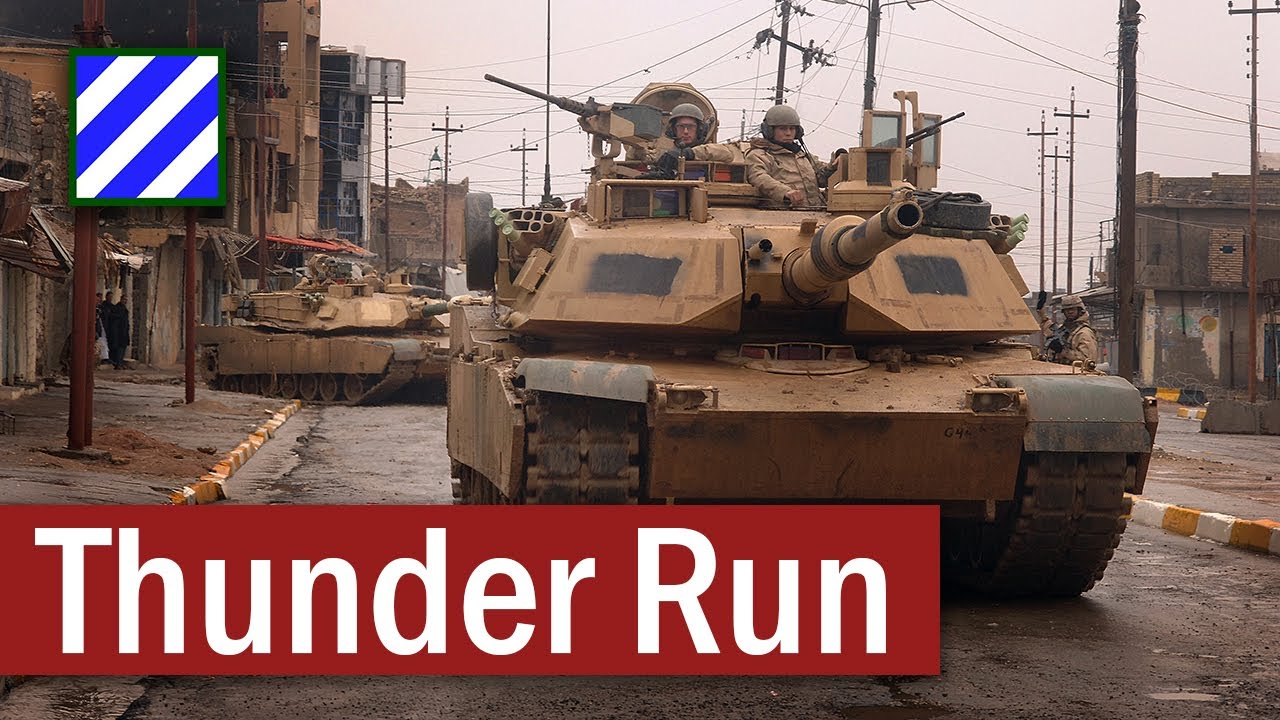
The military tactic of the “Thunder Run” had been developed as a potential solution to capture Baghdad since the end of Operation Desert Storm by the US military. A bloody street-by-street battle as envisaged by the thinking of Military Operations in Urban Terrain (MOUT) in the 90s was deemed unacceptable due to the very low tolerance level of the American public for US casualties. This train of thought on the US public’s weak stomach was further reinforced in the aftermath of the misadventure in Mogadishu, Somalia during Operation Restore Hope in 1993. The prediction for a bloody MOUT conflict was so prevalent that the term “Saddamgrad” was coined in the buildup to the final showdown in Baghdad. It was clear that only Dictatorships like Nazi Germany & Communist Russia could tolerate ultra-costly urban bloodshed like that witnessed in Stalingrad during WWII.
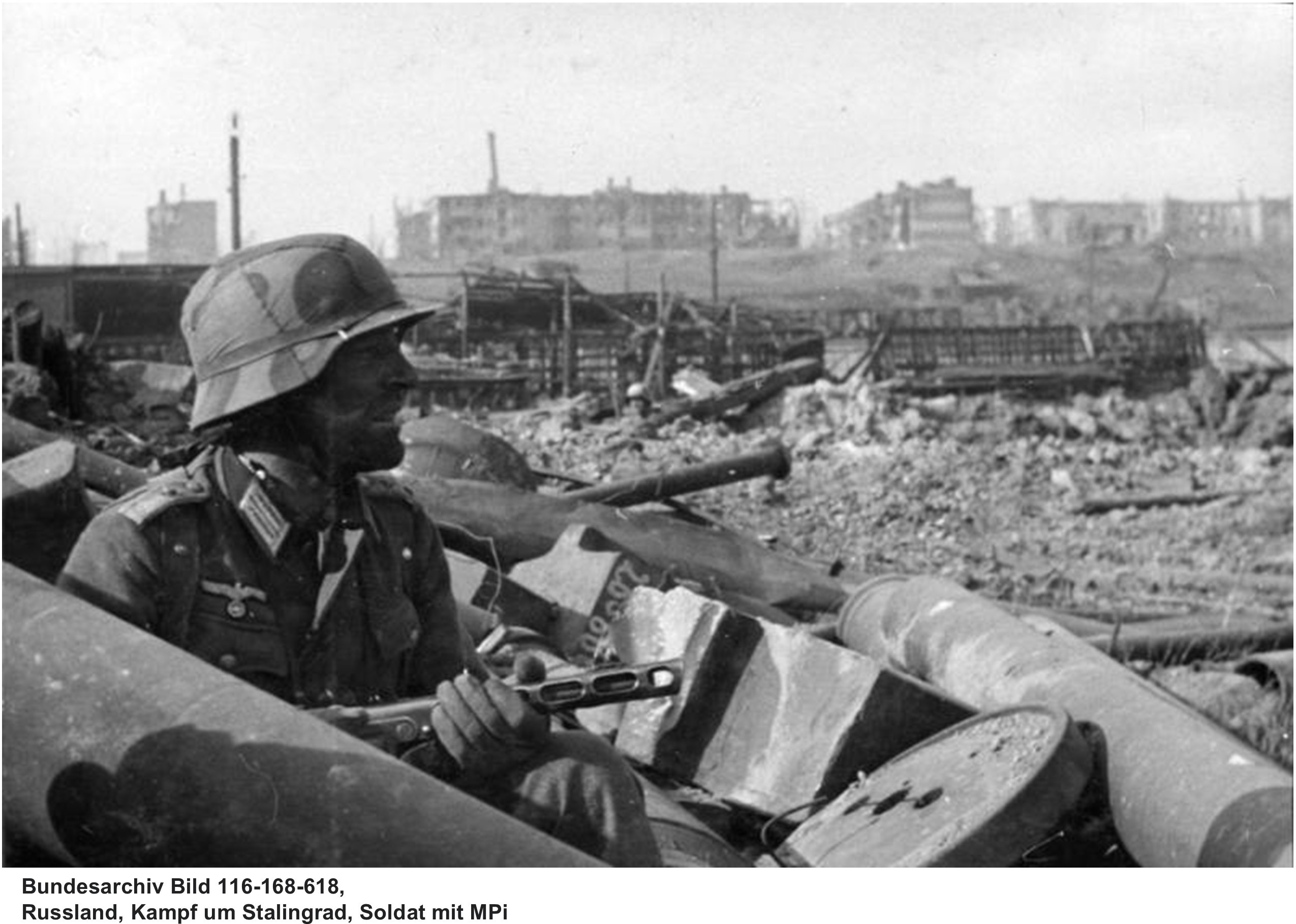
The US military had gone to school on the lessons learned from a Russian attempt in the city of Grozny in 1995. In the initial battle for Grozny, the Russian’s version of the “thunder run” was launched by the 131st Separate Motor Rifle Brigade during the First Chechen War. In a matter of days, this brigade lost 20 of its 26 T-72 Main Battle Tanks, 102 of its 120 armored vehicles & nearly 800 of its 1,000 soldiers to the fierce Chechen resistance.
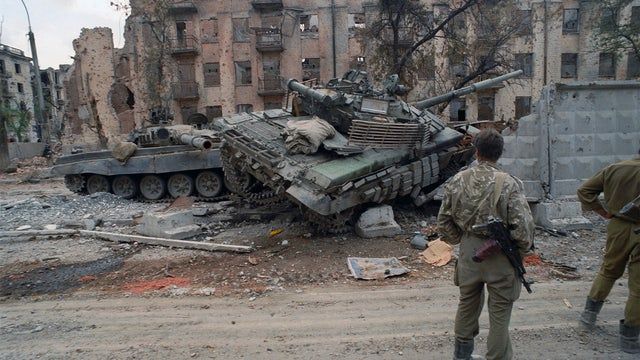
The US Army & Marine Corps would go into Baghdad with a far superior strategy, better trained soldiers & Marines plus a completely upgraded class of armor equipment.
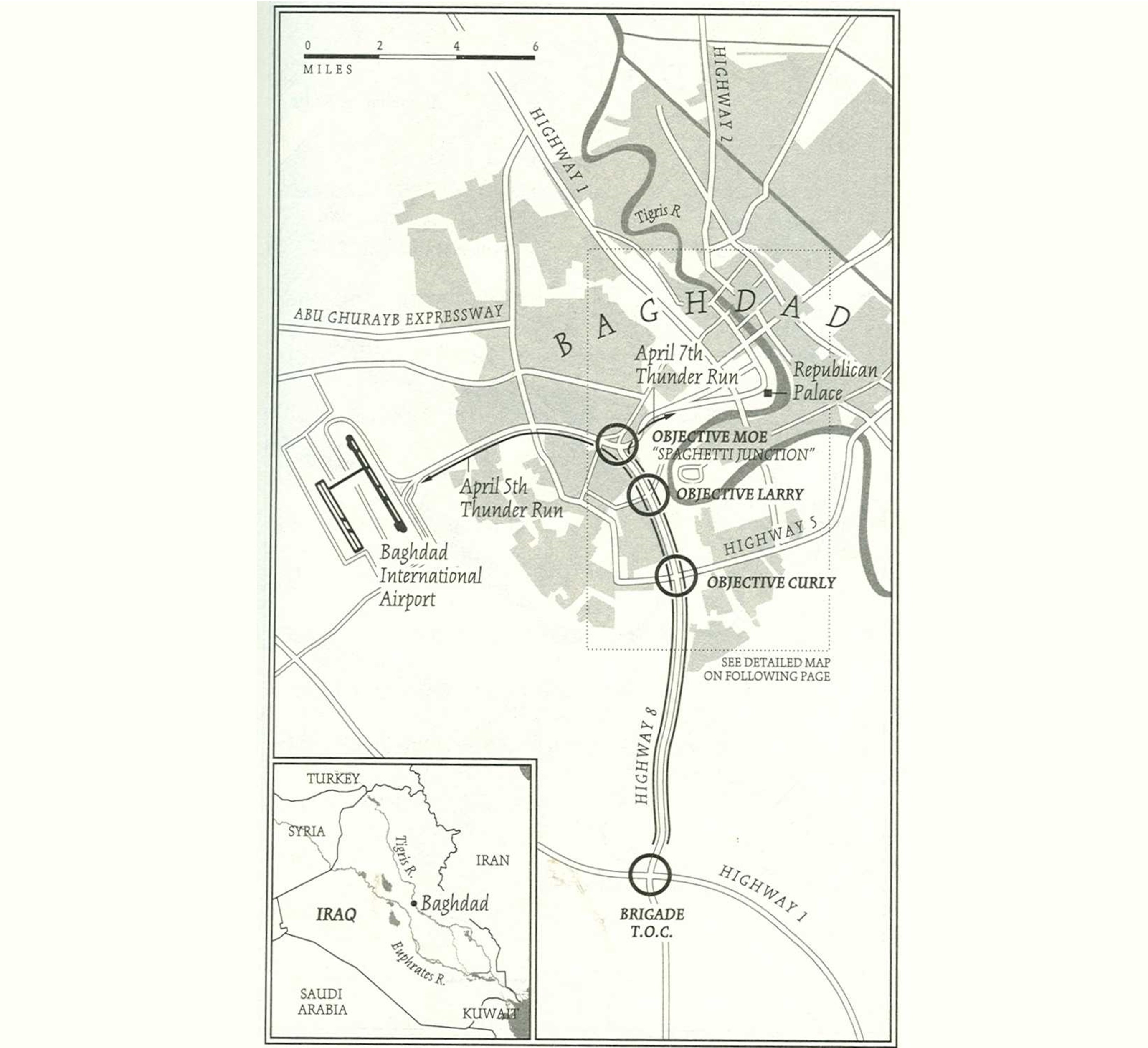
At 1600 on 4 April, MG Blount gave the mission to COL David G. Perkins, commander of 3d ID’s 2d Brigade, for execution the following morning. Staging out of Objective SAINTS, the battalion-sized column of M1A1 Abrams Tanks & M2 Bradley Infantry Fighting Vehicles (IFV) would attack north on Highway 8 into the middle of western Baghdad & then turn west, linking up with COL William Grimsley’s 1st Brigade, 3d ID, at the recently taken Saddam Hussein Airport. The bold plan, which was judged a “reasonable risk,” was destined to become the first US armored foray, a “Thunder Run” into a major city since WWII.
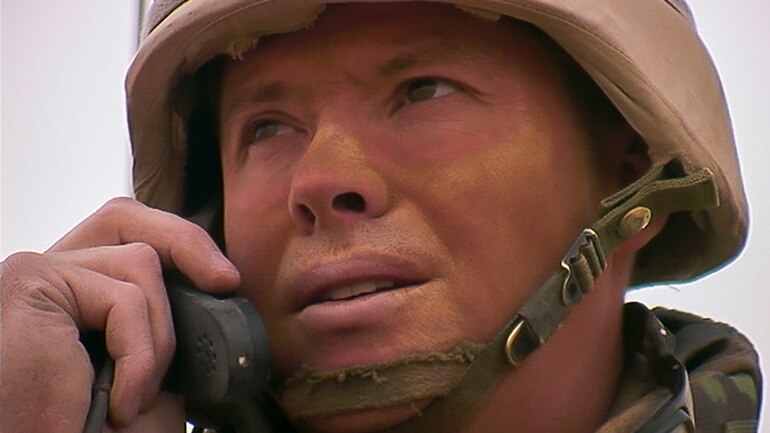
COL Perkins assigned the “thunder run” mission to LTC Eric Schwartz’s Task Force (TF) 1st Battalion, 64th Armor Regiment (1-64 AR). Schwartz’s TF 1-64 AR included 731 Soldiers, 30 M1A1 Tanks, 14 M2 Bradley IFVs, 14 engineer vehicles & other mechanized support vehicles. Perkins’ intent was to “create as much confusion as I can inside the city because I had found that my soldiers or my units can react to chaos much better than the enemy can.” Schwartz praised the straightforward commander’s intent & purpose. “The planning was simple,” he explained. “The thunder run mission was the simplest of all tasks that we were given. There was no maneuver required. It was simply battle orders followed by battle drills.”
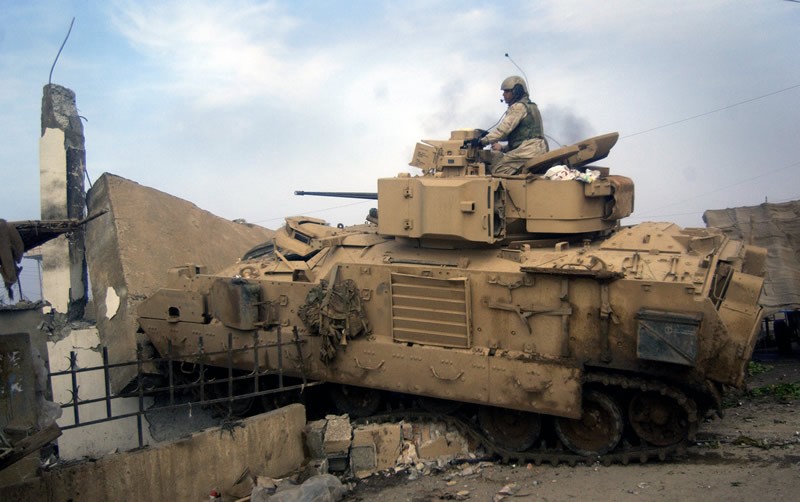
At 0600 on 5 April, Schwartz’s Task Force 1–64 AR armored column rolled north up Highway 8. In the vanguard of the staggered column was CPT Andre Hilmes’ Alpha Company. COL Perkins, 2nd Brigade’s Commander accompanied the task force in his command M113 armored personnel carrier to observe firsthand the effectiveness & distribution of enemy forces.
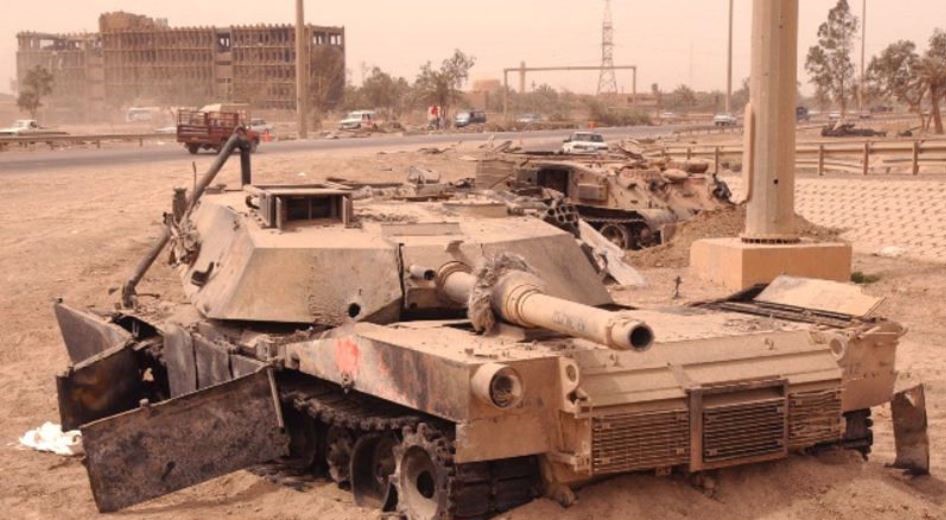
The "Thunder Run” found Iraqi resistance was disorganized & 1-64 sustained few casualties. The unit was forced to abandon one tank due to a recoilless rifle or RPG strike in the rear that penetrated a fuel cell & set the engine on fire. The crew was unharmed & later in the day the Air Force bombed the M1A1 to destroy it in place.
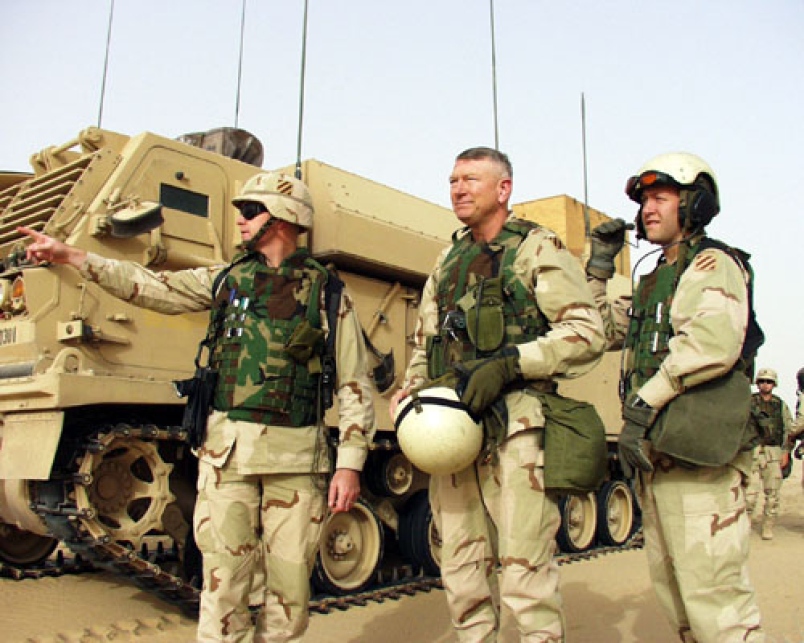
The 3rd ID team of MG Blount & COL Perkins decided to push for a much larger & potential decisive “Thunder Run” on 6 April. Perkins was given the green light to take the entire 2nd Brigade (2 BDE) & that afternoon briefed his intent. Speaking in a dusty tent without notes or handouts, Perkins explained to his subordinate commanders that the entire brigade would conduct a second “thunder run” at dawn the next morning. He instructed them to prepare to spend the night downtown even though it hadn’t been approved by the 5th Corps CG. “We have set the conditions to create the collapse of the Iraqi regime. Now we’re transitioning from a tactical battle to a psychological & informational battle,” he said.
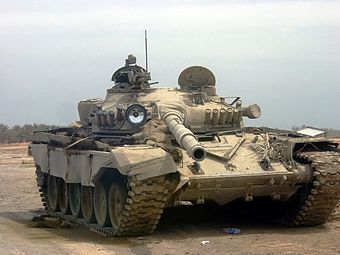
Maintaining momentum during the assault was paramount. “Attack as fast as you can, and push right through to the center of the city,” Perkins added. “If a vehicle becomes disabled due to enemy fire, you immediately take the crew off, put them on another vehicle, and you just leave it. This is the last big battle tomorrow, gentlemen. They said it would take five divisions to win this war, but there’s no question that we can really do it ourselves tomorrow. We’ve got to seal the deal now.”
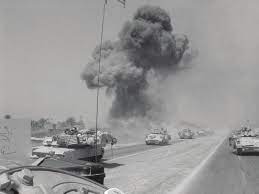
The scheme of maneuver had LTC Schwartz’s TF 1-64 AR again assuming the vanguard. If conditions warranted turning northeast towards downtown, TF 1-64 AR would seize downtown Objective DIANE, which included the Tomb of the Unknowns, a park & a zoo. LTC deCamp’s TF 4th Battalion, 64th Armor Regiment (TF 4-64 AR), would follow in trace of TF 1-64 AR & seize two of Saddam Hussein’s palaces on the Tigris River (Objectives WOODY EAST & WOODY WEST.) The third battalion, LTC Twitty’s TF 3d Battalion, 15th Infantry Regiment (TF 3-15 IN), would keep the Line Of Communications (LOC) open between Objective SAINTS & downtown Baghdad.
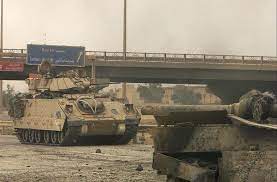
To do so, TF 3-15 IN had to control three vital overpass intersections on Highway 8, designated as CURLY, LARRY & MOE in a homage to the Three Stooges. MOE was the key interchange where Perkins’ soldiers either had to move east in the direction of downtown or make a U-turn, fighting back down Highway 8 to SAINTS. For Perkins, controlling the three overpass intersections was decisive to securing MG Blount’s approval of his option to go downtown. The second “thunder run” got off to a rocky start. In the wake of the 5 April attack up Highway 8, the Iraqis not to be surprised again had laid a minefield on the highway north of SAINTS, extending for 500 meters. At 0538 on 7 April, CPT Hibner’s company of 2d BDE engineers hastily cleared 444 mines.
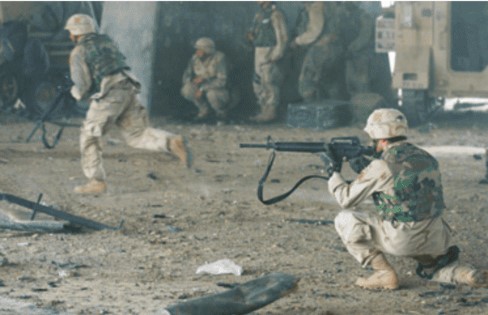
By 0600, TF 1-64 AR, TF 4-64 AR & TF 3-15 IN departed in that order in a long march column. Only 11 minutes into the movement, enemy AK-47s, machineguns, RPGs & mortar rounds erupted from both sides of the highway. In accordance with Perkins’ intent, the two-leading task forces continued to advance & handed over targets to trailing units, which also recovered the crews of disabled armored vehicles. Perkins faced his first critical decision an hour into the operation. As the armored column clanked towards MOE, he radioed BG Lloyd J. Austin III, Assistant Division Commander (Maneuver) & the current SECDEF, explaining that the level of resistance faced by 2nd BDE was less intense than during the April 5th’s “thunder run.” He stated his preconditions for going downtown, insisting that he could meet them all. Without giving a definitive answer, Austin stated that he would inform Blount.
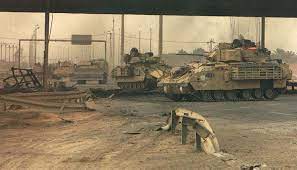
He told Perkins to continue the advance and see how the fight developed. Shortly after 0700, the armored column turned east off Highway 8 & within an hour, seized DIANE, WOODY EAST & WOODY WEST. The brigade commander calculated that he had enough fuel to delay a final decision about formally requesting an overnight stay in Baghdad until 1000. In his mind, the shock value of keeping a US armor task force downtown greatly outweighed the significant risks associated with being isolated in a hostile urban environment.
The movement off Highway 8 caused a stir at 5th Corps Headquarters (HQ.)
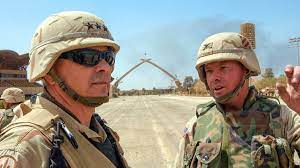
When LTG Wallace went to bed on 6 April, he thought that 2nd BDE would advance to MOE & then make a U-turn, heading back to SAINTS. As the armored task forces advanced towards the downtown objectives, Wallace observed the operation on the screen of his Blue Force Tracker System. Stunned, the Corps Commander asked Blount about the unexpected deviation from his intent during their regular morning brief. Blount explained Perkins’ estimation that the diminished resistance faced on Highway 8 justified turning downtown & positioning his Abram Tanks at Hussein’s palace complex in a dramatic show of the regime’s military irrelevance. Tension filled the HQ as Wallace contemplated the situation. Finally, Wallace broke the long silence by signaling his approval of the bold thrust. According to COL Thaden, the 5th Corps Deputy G2 (Intelligence Officer) who was present at the time of the conversation, Wallace replied, “Go ahead, I trust your judgment. If you think you can get to the Palace & hold it, [its] your call and I’ll clear it [with higher HQ.]” Refusing to focus on the unauthorized divergence from his original guidance, Wallace instead recognized that one of his subordinate commanders had boldly created an opportunity for success through disciplined initiative & prudent risk analysis. He believed that the overall mission success was more important than the methods used to achieve it. Both the Corps and Division Commanders therefore deferred to the judgment of the Commander on the ground.
Meanwhile, the 2nd BDE faced a rapidly deteriorating situation.
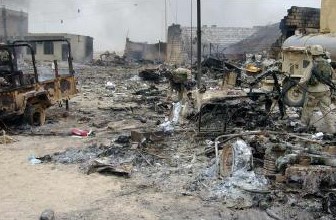
As TF 3-15 IN slugged it out at CURLY, LARRY & MOE with bands of determined enemy fighters, a rocket attack disrupted the 2nd BDE Tactical Operations Center (TOC) at Objective SAINTS, killing three soldiers & temporarily cutting off communications. In the midst of the mayhem, LTC Wesley, the 2nd BDE Executive Officer (XO), calmly orchestrated efforts to triage wounded soldiers & evacuate disabled vehicles. Within 45 minutes, Wesley had reestablished communication & set up a makeshift TOC, minimizing the disruption of command & control in this crucial phase of the “thunder run.” Perkins praised his XO & all the TOC soldiers for remaining focused on the mission in the midst of disarray. He later expounded on the soldiers’ shared understanding of his intent, “Everyone understood how important it was to stay in the city & not have to fight the fight again.”
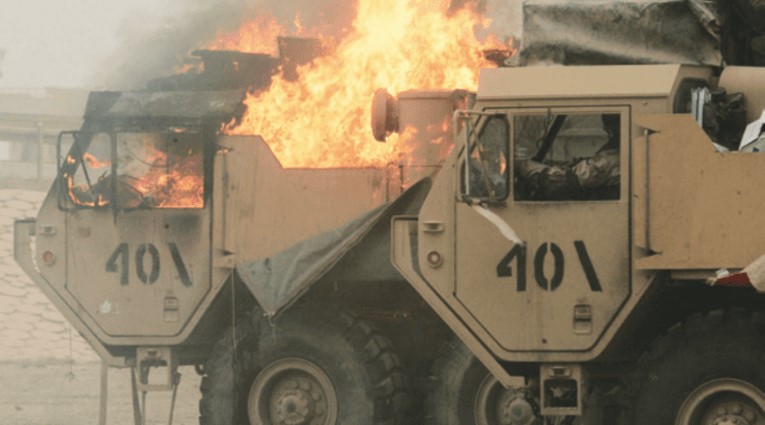
Events continued to spiral out of control on Highway 8. As Perkins reached his self-imposed 1000 deadline for seeking permission to spend the night, TF 3-15 IN was still fighting to maintain control of the three key road junctions CURLY, LARRY & MOE. Even worse, Iraqi fighters ambushed the first convoy of heavy expanded mobility tactical trucks (HEMTTs) hauling much-needed supplies & fuel up the LOC. Five HEMTTs were destroyed, two soldiers KIA, and Highway 8 remained disputed. Fierce fighting around Objective MOE also left a mechanized infantry company critically short of ammunition.
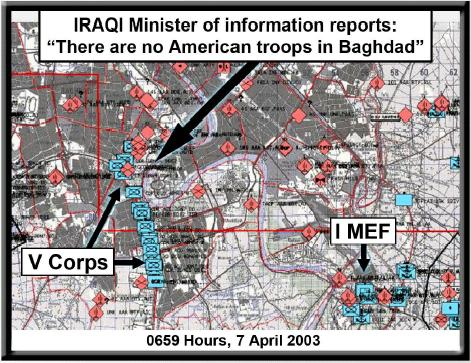
Despite the dire circumstances, COL Perkins refused to rush his decision. “If you had a decision matrix,” he stated, “it probably did not pay to spend the night.” Nevertheless, he delayed because he did not want to surrender symbolic ground or face the possibility of ordering additional armored attacks in the coming days. Withdrawing from the city would also embolden the regime & provide additional propaganda for the Iraqi Information Minister to distort as he had on April 5th.
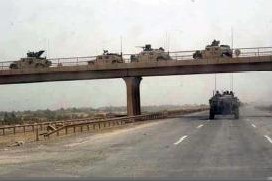
Based on extensive pre-war training in Kuwait, Perkins trusted LTC Twitty’s task force to win the battles at the overpass intersections if given sufficient time, bought by delaying a decision past the 1000 deadline. To mitigate resupply problems, he instituted an “energy conservation plan,” ordering TF 1-64 AR & TF 4-64 AR M1A1 tank commanders to turn off their engines. He then positioned the task forces’ M2 Bradleys at key downtown bridge & intersections to strengthen the defensive posture. Perkins believed that such measures would buy him several additional hours before supply concerns might force him to withdraw.
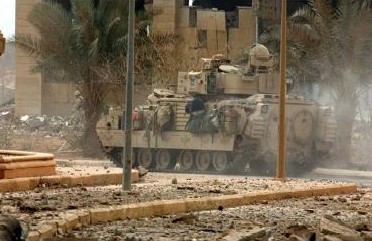
MG Blount again trusted the judgment of his commander in the field. At 1016, he reinforced TF 3-15 IN by moving the 1st Brigade’s TF 2d Battalion, 7th Infantry Regiment (TF 2-7 IN), to occupy and defend Objective CURLY, allowing TF 3-15 IN to focus on clearing the areas around LARRY & MOE. By late afternoon, the infantry task forces had defeated the Iraqi fighters along Highway 8 & cleared the LOC for the HEMTTs to move safely north to supply Perkins’ Brigade. Just hours before sundown, the fuel & ammunition resupply reached the downtown Task Forces.
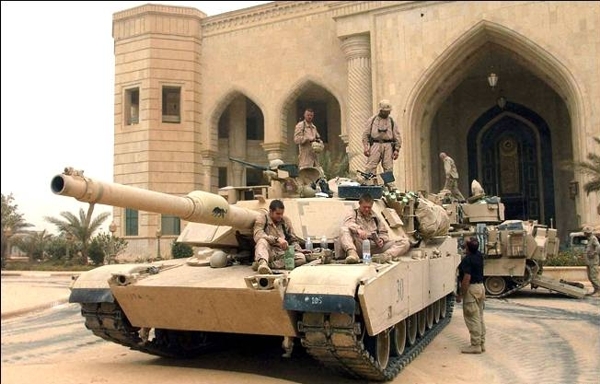
COL Perkins’ deliberate decision-making & confidence in his subordinate commanders validated LTG Wallace’s & MG Blount’s trust in him. By early evening, Wallace approved the decision to spend the night. In one of the boldest gambles in modern military history, just three battalions & fewer than a thousand men launched a violent thrust of tanks & armored fighting vehicles into the heart of a city of five million people & in three days of combat brought Baghdad under coalition forces’ control. “Saddamgrad” was not to be as a bold urban “Panzer blitzkrieg” known as a “Thunder Run” dislodged a dictator. Col Perkins would go onto be a 4-Star General.
